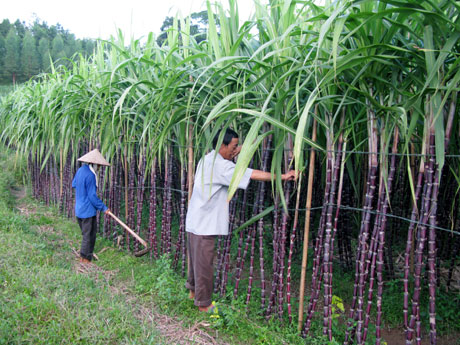Currently, due to the trend of globalized trade, Vietnam's exports are growing, especially agricultural products are being developed by the state and businesses to meet export requirements. potential markets, bringing high revenue to farmers. Typically, purple sugarcane and lychee were first exported to Japan in 2019 or mangoes, rambutan and dragon fruits were exported to the US. The Vietnamese State strongly encourages and focuses on developing agriculture, developing planting areas, encouraging farms to register to meet VietGAP and GlobalGAP standards.

Normally, it is easier to export than importing, so you should ask importers what they need to import smoothly. According to our many years of experience as an exporter, the records of exporting fresh sugarcane to importers who have advantages in receiving goods include: Contract, invoice, packing list, bill, phytosanitary quarantine, C / O certificate of origin. The importer will use the contract, invoice, packing list for customs clearance, phytosanitary for import quarantine and prove that the imported goods are safe, can be imported, and use C / O to enjoy the advantages. tax treatment. Particularly for Vietnam - Korea, the CO system is using electronic so when you receive the paper C / O, you only need to scan for the importer, not necessarily send the original to Korea.
- Customs clearance form
- Commercial invoice (Invoice)
- Korean stamp according to Korean food safety law No. 1399
- Purchase list or purchase invoice
- Certificate of origin C / O
- Phytosanitary (phytosanitary)
- Air waybill or sea waybill (airway bill / seaway bill)
- Prepare the goods in the right quantity and quality, store them at the appropriate temperature and deliver them on time.
- Always ask the importer or customs clearance agent in Korea for Korean labels in accordance with Korean Food Safety Act No. 1399.
- Choose a professional customs clearance service provider who has previously cleared and processed this or similar items.
- For sea freight: Choose shipping lines that take about 6-7 days to dock in South Korea, avoiding long-distance ships, connecting routes for 10 days, 14 days.
- For quarantine date, it must be before or coincide with the date of boarding. The date of boarding on C / O must coincide with the date of boarding on the bill and before or equal to the date of bill issuance.